Chromosera cyanophylla
Scientific name: Chromosera cyanophylla (Fr.) Redhead,
Ammirati, & Norvell
Derivation of name: Cyan- means "blue" and phylla means
"leaves" (i.e., gills).
Synonyms: Agaricus cyanophyllus Fr.; Mycena lilacifolia
(Peck) A.H. Sm.
Common name(s): Unknown.
Phylum: Basidiomycota
Order: Agaricales
Family: Hygrophoraceae
Occurrence on wood substrate: Saprobic; scattered or in
groups on rotting conifer wood, particularly balsam fir (Abies
balsamea) and hemlock (Tsuga canadensis); May to
October.
Dimensions: Caps 0.6 to 2.5 cm wide; stipes 1-4 cm long
and 1-2 mm thick.
Cap: Surface slimy (viscid) and lilac-colored when young,
soon turning bright yellow to pale yellow with a paler
margin.
Gills: Decurrent to subdecurrent; lilac when young,
becoming whitish to pale yellowish at maturity.
Spore print: White.
Stipe: Slimy when moist; lilac at first, fading to pale yellow;
base often with lilac mycelium.
Veil: None.
Comments: Unfortunately, the lilac (violet) color soon
fades
(sometimes completely) from all parts of this species,
complicating identification. The slimy cap, decurrent gills, and
growth on conifer wood are important field traits, particularly
when the color has faded.
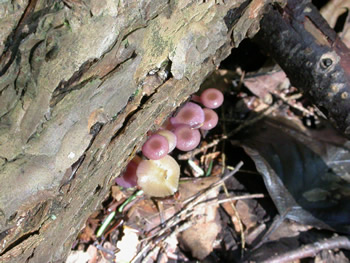
Figure 1.
Chromosera cyanophylla on a hemlock log.
Photo © Gary Emberger.
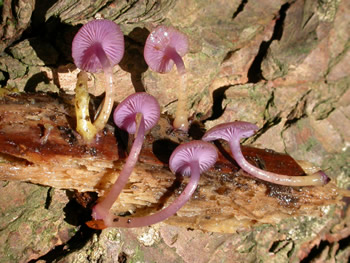
Figure 2.
The gills and other parts of the mushroom are
conspicuously lilac when young.
Photo © Gary Emberger.
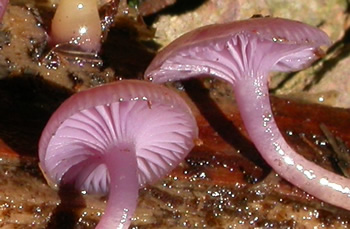
Figure 3.
Chromosera cyanophylla has decurrent gills.
Photo © Gary Emberger.
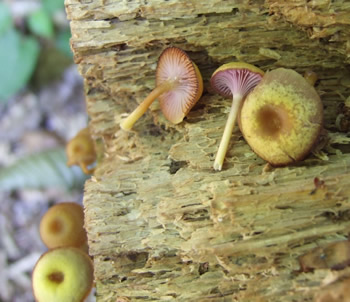
Figure 4. The lilac color quickly fades from the caps
and stalks. Photo © Dianna Smith.
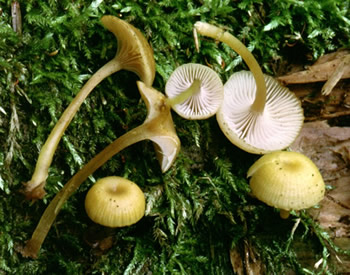
Figure 5.
At maturity, there may be little or no trace of
the lilac coloration. Photo © Steve Nelsen.